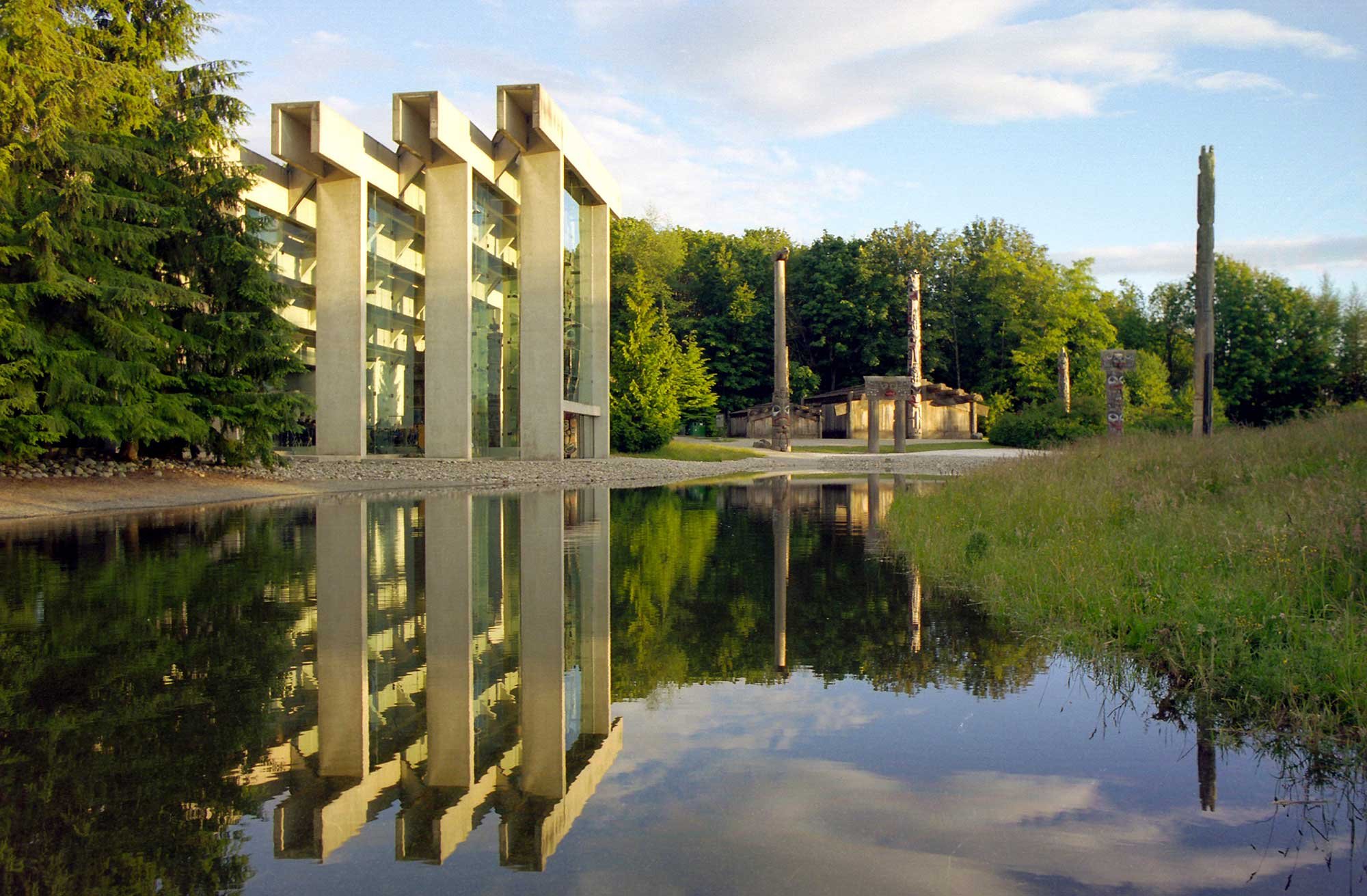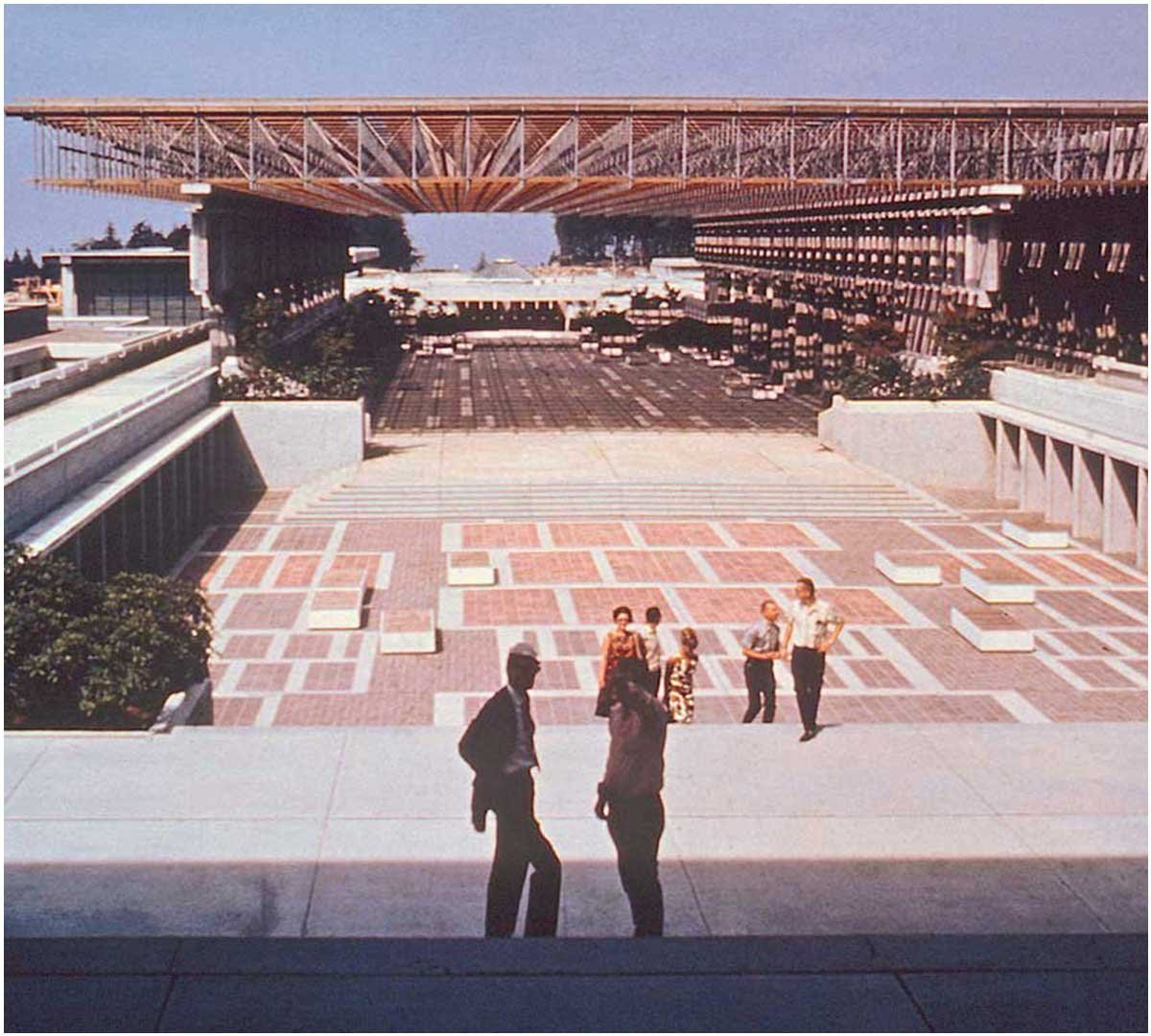IMMERSIVE VIDEO
Step into an immersive experience of Arthur Erickson’s four principles
To Arthur Erickson, architecture was more than building, it was a way of understanding the world.
The Four Principles
His designs carefully balance use, structure, landscape, and the experience of moving through a space. Every detail, how light enters a room, how a path unfolds, how materials interact with nature, was chosen to create harmony between people and place. This website explores the principles that shaped his work and continue to inspire architecture today.
Arthur Charles Erickson 1924-2009
Early Life and Education
1924
Born in Vancouver, BC, and first child to Oscar and Myrtle Erickson.
1928
Brother Donald is born.
1937
Begins painting, encouraged by his mother and inspired by family friends who were artists.
1940
At 16, Arthur Erickson’s abstract works are selected by Group of Seven artist Lawren Harris for exhibition at the Vancouver Art Gallery, making him the youngest artist to exhibit there.
1943
Meets architect Richard Neutra at a soirée at the Binning House, the first modern house in BC.
1944-1946
During World War II, Arthur Erickson served in Canadian Army Intelligence in India and Malaysia spending spare time exploring the local country and sketching what he saw.
Travel Experiences
1947
After military service, Arthur Erickson, inspired by an article on Frank Lloyd Wright chooses to study architecture at McGill University in Montreal. He visits Wright at Taliesin while studying at McGill.
1950
Graduates with honours in architecture from McGill University and receives a Travelling Scholarship.
1950-1952
Architectural journey through Egypt, the Middle East, Europe, Scandinavia, and England.
1955
Begins teaching architecture at the University of Oregon (1955-56) and UBC (1956-65).
Innovation and Recognition
1957
Buys his Vancouver home (now Arthur Erickson Foundation owned), begins renovations and the creation of his famous private garden landscape.
1960
Filberg House (1958) awarded Massey Medal and attracts national attention.
1963
Erickson Massey Architects opens after winning the Simon Fraser University design competition with international acclaim.
1965
MacMillan Bloedel Building (now AE Place) is designed, and Expo 67 theme pavilions. Establishes Francisco Contract Furniture with partner Francisco Kripacz
1967-1969
Designs Bank of Canada Building, Ottawa and the Canadian Pavilion for Expo ‘70 in Osaka; wins top awards.
1972
Establishes Arthur Erickson Architects in Vancouver and designs Museum of Anthropology.
1973-1974
Designs BC Law Courts, Robson Square, and Toronto Subway stations.
1976
Designs Roy Thomson Hall for the Toronto Symphony.
Mature Works and Honours
1979-1980
Designs Napp Laboratories in UK, and wins California Plaza competition LA.
1983-1984
Designs the Canadian Embassy in Washington, D.C., and the San Diego Convention Center.
1985-1986
Awarded AIA and French Academy of Architecture Gold Medals, and designs Etisalat towers in the United Arab Emirates.
1987-1992
Designs Fresno City Hall & Kaiser Permanente Hospital, CA, and UBC Koerner Library.
1996
Designs Museum of Glass, Tacoma Washington, and Waterfall Building, Vancouver with Nick Milkovich Architects, and the Kuwait Oil Sector Complex, with Atelier.
Legacy and Final Years
2001-2005
Designs Dalian and Weihei Cultural Centres, China with NM Architects, and named Honorary Fellow of the Royal Institute of British Architects.
2009
Arthur Erickson passes away in Vancouver, and a grand memorial is held at his Convocation Mall, Simon Fraser University.
2012
Arthur Erickson Foundation is launched.
2024-2025
– Arthur Erickson Centennial Celebrations feature exhibitions, tours, lectures, documentaries, and a special event with performances at his Robson Square plaza.
Explore More
Arthur Erickson Place
The bold 27-storey concrete twin towers blend site, light, cadence, and space to create a dynamic yet tranquil environment. As you explore, notice how it interacts with its surroundings, captures natural light, stepping back from the Georgia Street, rising majestically like a Douglas Fir from a sunken plaza and landscaped to echo the local environment.
Sketches and Paintings
Before becoming a celebrated architect, Arthur Erickson expressed his love of nature and form through painting and sketching. His early artwork reveals the curiosity and vision that would guide his life’s work.
Unbuilt Projects
Arthur Erickson’s unbuilt projects show the breadth of his imagination. These visionary designs, though never realized, reflect his bold ideas and enduring commitment to harmony between people, place, and possibility.
AE Centennial Celebration
The Arthur Erickson Centennial celebrates 100 years of visionary design with a year-long series of exhibitions, lectures, tours, and public events. From a museum exhibition to street-level festivities, the centennial honours Erickson’s lasting impact on architecture, culture, and the Canadian landscape.























